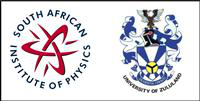Speaker
Apply to be<br> considered for a student <br> award (Yes / No)?
Yes
Level for award<br> (Hons, MSc, <br> PhD)?
MSc
Abstract content <br> (Max 300 words)
Bessel beams are non-diffractive light beams that have a large focal depth and a micron-sized focal spot which makes them ideal for laser micromachining Bessel beams can be generated using various methods and one such method is through the use of an axicon. In this study we generate Bessel beams by illuminating an axicon with a Gaussian beam. A CPA-Series Ti: Sapphire femtosecond laser (λ_0=795nm) was used as the source laser for the Gaussian beam and three axicons with different apex angles; 〖170〗^0, 〖175〗^0, and 〖178〗^0 were used to generate non-diffractive beams. The apex angle of the axicon has a huge impact on the size of the Bessel beam and it is defined as β=〖180〗^o-2γ, where γ is the base angle of the axicon. In this study, the central spot size r_0, propagation distance Z_max, and the number of rings N, were measured for each axicon. It was found that a large apex angle results in a long propagation distance, a large central spot diameter, and less number of rings on the Bessel beam. These properties of the Bessel beam are ideal for laser drilling of micron sized holes on different materials.
Would you like to <br> submit a short paper <br> for the Conference <br> Proceedings (Yes / No)?
No

